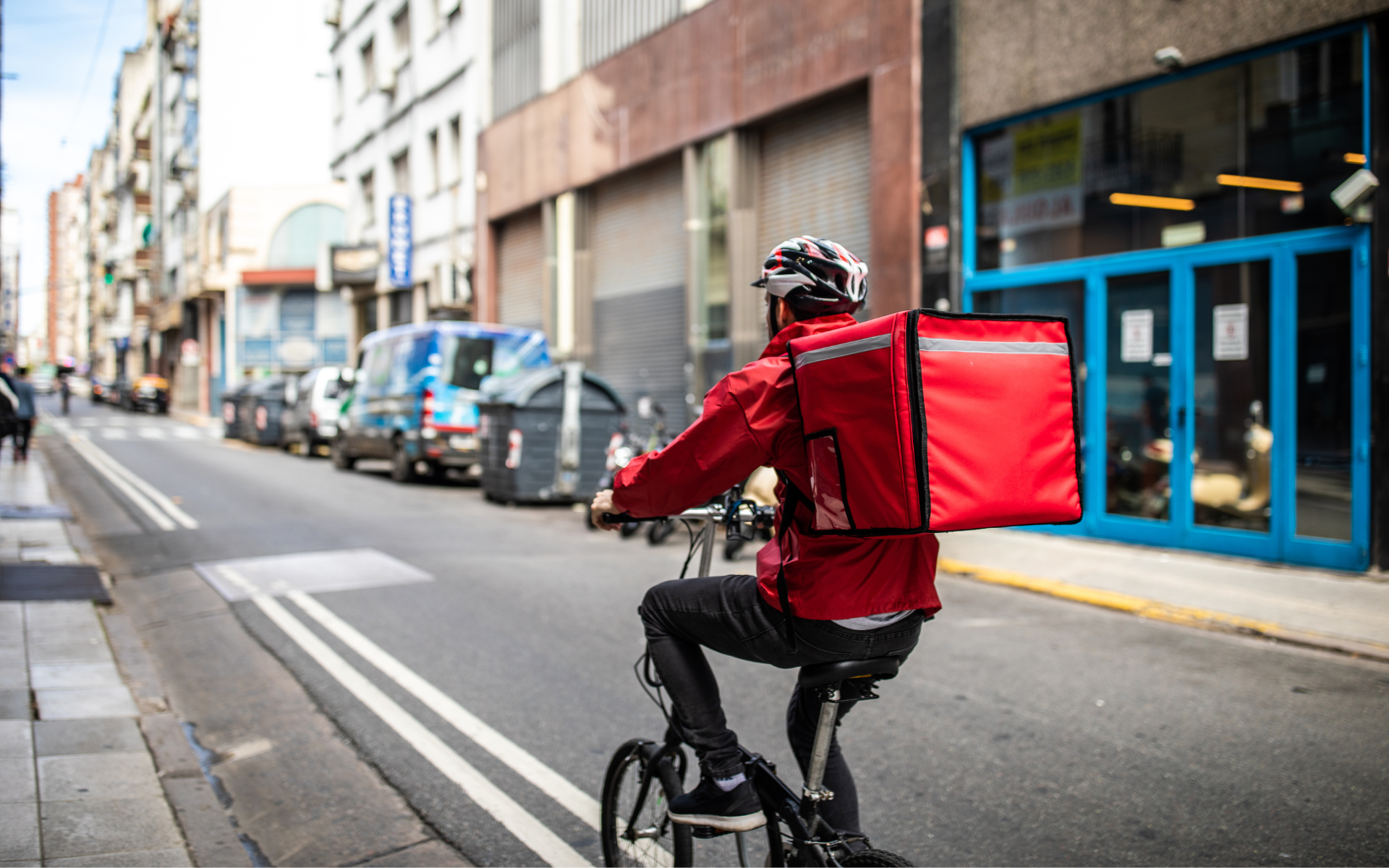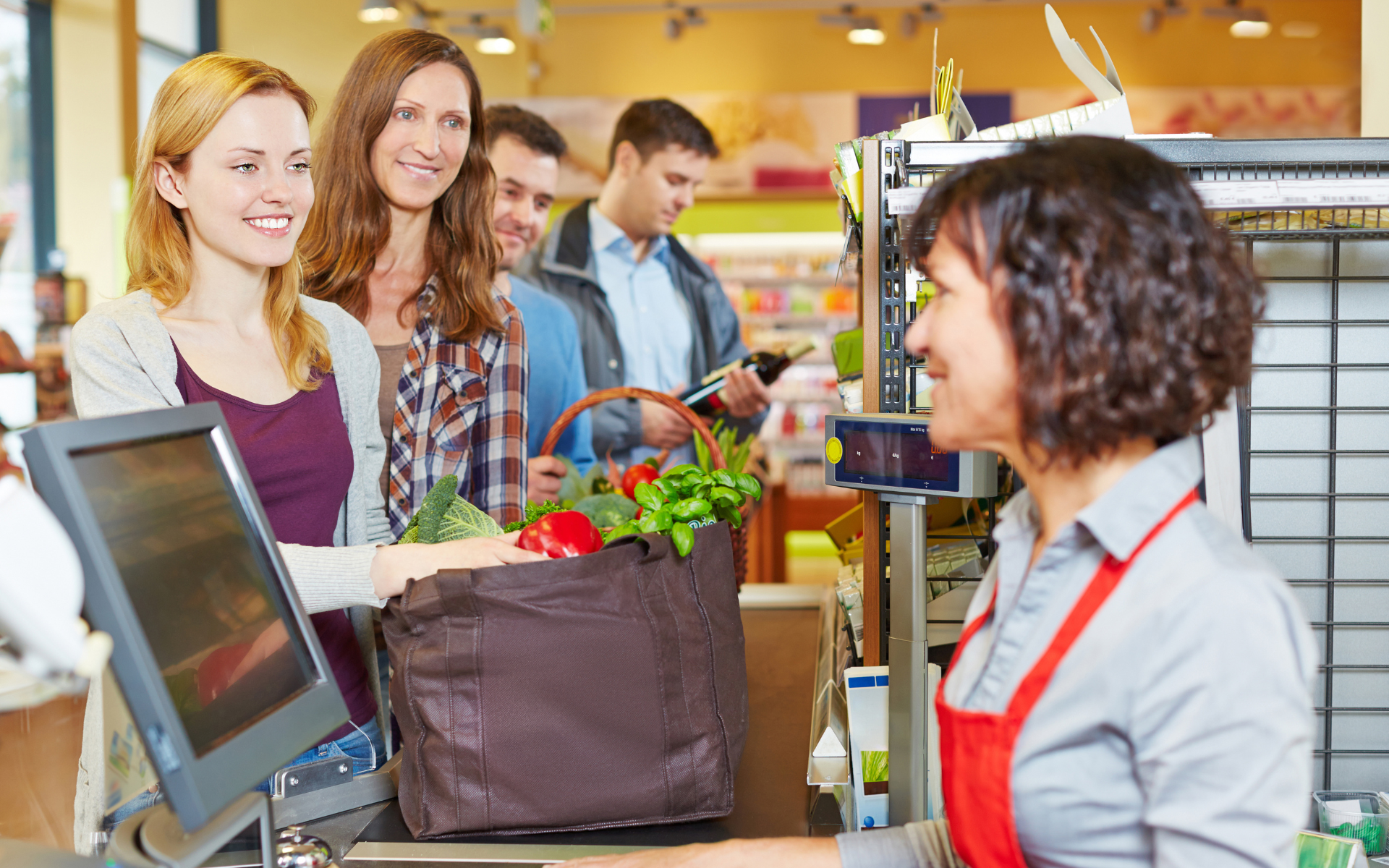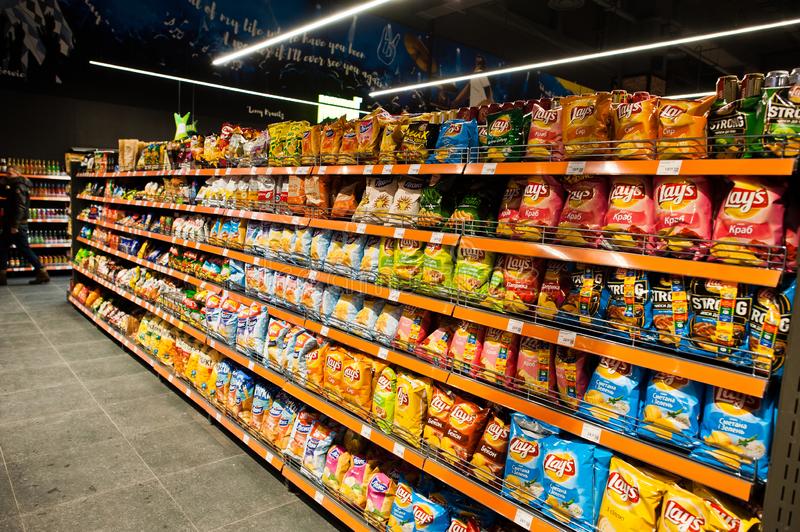Blog
The Future of Grocery Stores
If you frequent our blog, then we know what you’re thinking. “Why are conversion strategists concerned about the future of grocery stores?” We know this article isn’t the typical type of conversion rate optimization (CRO) article you may see. But we don’t believe optimization is just related to ecommerce conversions.
Our goal with this article was to find a big, real-life problem that we could apply our CRO process to (learn about our CRO process). In light of the COVID-19 pandemic, this article is even more relevant.
Over the past 5 years, a number of trends and developments have taken place in the supermarket & grocery store industry that have many implications for the future of grocery shopping.
Lately, when in Walmart, Meijer, Kroger, or Target, you’ve likely seen quite a few green shirts in the checkout lines. Who do they work for? You guessed it—Shipt.
If you’re not already familiar with Shipt, it’s a service that offers peer-to-peer grocery delivery to your doorstep within an hour. In other words, it’s the Uber or Lyft of grocery shopping—it’s another big player in today’s gig economy.

What does this mean for the supermarket & grocery store industry? In short, there’s potential for less foot traffic, especially as Shipt and similar services become increasingly more popular.
Supermarkets and grocery stores need to adapt and find new ways to stay afloat. Target is already ahead of the curve on that front. How? Well, in late 2017 they acquired Shipt for $550 million. While this is a step in the right direction in the mind of a company like Target, it’s certainly not the be-all and end-all solution.
Walmart and other supermarkets/grocery stores are now offering grocery pickup or their own delivery services as a way to bring the convenience of online shopping to the offline world.
But there’s one problem: this isn’t exactly as convenient as online shopping. At least not yet.
And unfortunately for Walmart and other grocery stores, there’s one company looming above all the rest, one that has already changed the world of shopping and looks to do so again.
Amazon.
WHAT IS AMAZON DOING?
While all these companies (Walmart, Meijer, Kroger, Target, etc.) are adapting to the current grocery shopping trends and increasingly transitioning to the online space, they’re still playing catch up to Amazon.
As the parent company of Whole Foods Market since 2017, Amazon is already familiar with the world of brick and mortar grocery shopping. And yet, they’ve been adopting a more ecommerce-driven philosophy when it comes to grocery shopping with each passing year.

Currently, Amazon has a program called Amazon Fresh (see how it works). Essentially, you can do your grocery shopping online and have Amazon ship your groceries at a recurring time and date. This is similar to Shipt, except Amazon is already a trusted name by millions around the world and is thus better positioned to dominate this market.
WHAT DOES THIS MEAN FOR THE FUTURE OF GROCERY STORES?
Unless you’re from a large city like Chicago, Detroit, New York, and so on, then you’ve likely noticed how barren and lifeless many malls across the nation have become. With Amazon and the boom of ecommerce businesses came the “retail apocalypse”, which was catalyzed by the Great Recession of 2007–2009.
Some believe a similar event may be happening again within the supermarket & grocery store industry as more and more stores are closing their doors. The Amazons and Walmarts of the world are weeding out the competition one by one.

At this point, here’s what you may be thinking: 1) grocery stores and supermarkets need to transition their stores entirely to the world wide web, or 2) grocery stores and supermarkets need to close their doors because there’s no way in hell they can compete with Amazon.
But just like gray paint, the world isn’t so black and white. Continue reading to learn about how brick and mortar grocery stores and supermarkets can adapt and compete with Amazon.
WHAT ARE THE NEGATIVES OF TRADITIONAL GROCERY SHOPPING?
Before we talk about how stores like Walmart, Kroger, Target, and so on can survive and thrive in an era of increased online shopping, we need to talk about why services like Shipt and Amazon Fresh exist and are growing.
To begin, what’s the one thing you want to avoid every time you go grocery shopping? We’re willing to bet you’re thinking about the checkout lines. And if you weren’t already thinking about them, you are now!
The dreaded checkout line is one of the biggest negatives of grocery shopping. When you’re on a website, there’s no queue. You simply click ‘Add to Cart’, enter your payment information, then submit your order. Done.

Additionally, there’s the task of having to waste time getting to the grocery store in the first place. People value time, especially when they’ve already worked all day or want to take advantage of their entire weekend.
Then there’s the problem of being unable to find something in the store. And of course the one time you can’t find something you also can’t find an available employee to help.
Lastly, we’ve all heard that baseball is America’s pastime. But we’d argue that finding a parking spot at a grocery store at 6 pm on a weekday is truly America’s #1 sport.
These are the biggest hurdles pushing consumers to use grocery delivery services. But if you’ve used a service like Shipt before (and thanks to COVID we’re certain you have), then you likely know that these services have their own negatives.
WHAT ARE THE NEGATIVES OF GROCERY DELIVERY SERVICES?
When talking about the negatives of grocery delivery services, we inevitably begin talking about the positives of traditional grocery shopping.
For example, perhaps the biggest negative is that you can’t pick the exact produce you want to buy. You’re entirely reliant on a stranger making the same choice you would make.
When you go to the grocery store yourself, you’re able to pick out one soft, ripe avocado and 3 unripe avocados. You’re able to get all green bananas because you won’t be eating any for a few days. In other words, you’re in control (and people love control).
Additionally, grocery delivery services need to make a buck. That means you’re responsible for paying a fee (as well as a tip for the grocery shopper). These fees certainly exceed the cost of gas you would have when doing your own grocery shopping. And the fees aren’t immediately clear.
For example, with Shipt you won’t see a delivery fee for orders above $35. Instead, the fee is included in the price of the items you want to buy. In other words, a carton of eggs may be $1.29 in store, but on Shipt it will be listed at $1.59 (Shipt explains this in greater detail on their site). (2023 update: Whew, inflation sure is something, eh? I’d love $1.59 for a carton of eggs now…)

Now that we see that grocery delivery services aren’t perfect (see more pros and cons), it’s easier to see how it’s not the end of the world for traditional, brick and mortar stores. They still need to adapt if they want to see continued long-term success.
But instead of bringing grocery shopping to the online world, why not bring the online world to your grocery shopping?
WHAT CAN GROCERY STORES & SUPERMARKETS DO TO FUTURE-PROOF?
The grocery store as we know it today was first created in 1916 by Piggly Wiggly, which was founded by Clarence Saunders. Before 1916, grocery shoppers went up to a counter and asked the clerk to retrieve items for them.
In 1937, the first shopping carts were invented by Sylvan Goldman and rolled out at his Humpty Dumpty store in Oklahoma. Nine years later in 1946, Orla Watson innovated the shopping cart into the nestable design we’re familiar with today.
Since then, the grocery store hasn’t really changed that much. Sure, we’ve added self-checkout machines and food demonstrations, but at their core grocery stores are a lot like they were over 100 years ago.
Retail has changed drastically in the past 100 years. So has the telephone, the computer, the banking system, and countless others. It’s time grocery stores followed suit.
But how?
The most obvious way to improve traditional grocery shopping is to address the negatives we listed above. The biggest negative we listed was the checkout line.
There’s a lot of emerging technology out there, and among them is Amazon’s “Just Walk Out” technology that they use in their checkout-free Amazon Go stores (learn more). Yes, Amazon is ahead of the curve… again.

Essentially, after downloading the Amazon Go app, you can walk into any Amazon Go store, grab what you want, and… well… just walk out.
Stores across the world are now trying to come up with similar systems. By doing so, they wouldn’t need to employ any cashiers, which saves money. But, like most people, we’re not too fond of automation putting everyone out of work.
With these savings, we believe grocery stores can go a step further in their future evolution by reassigning their cashiers into new roles and using technology to drastically improve the shopper experience. Continue below to see what we mean.
INTERACTIVITY IN THE GROCERY STORE
Grocery shopping is viewed by most as a chore. Most other shopping is usually a privilege. If you love watching movies, TV shows, sports, or playing video games, then you understand there’s a certain joy involved when shopping for that new 70” 4K TV. If you’re a fashionista, then you know there’s a special moment of discovery when you find that perfect dress or pair of shoes.
So here’s the question we’d like to pose: what if we could experience that same joy and sense of discovery when grocery shopping?
We’re confident this can be achieved, and it all begins with creating a much more engaging and convenient shopping experience.
Smart Carts
It’s the 21st century. We have smartphones and we’re developing self-driving cars. It’s time to bring that technology into the grocery store.
Where should we start? How about with the shopping cart, which really hasn’t changed much since Orla Watson’s 1946 shopping cart.
Imagine a world where you can walk into a grocery store and use an app to connect with a self-driving shopping cart that follows you (or your phone, really). To quote the late Billy Mays, “but wait, there’s more!”
Now take that picture in your head and imagine a tablet mounted onto the cart that allows you to scan items as you place them in your cart and checkout from your cart, completely eliminating checkout lines.
Additionally, if you’ve ever been in an aisle that looks like this and you can’t decide what you want (humans can’t handle “overchoice”):

Then the mounted tablet can bring up nutrition facts, product details, and so on to help you compare products and make a decision.
Lastly, remember how we mentioned that being unable to find a product is a big negative of traditional grocery shopping? What if this mounted tablet had a map that could direct you to items that you can’t find?
This all sounds like a nice dream world, right? No lines. Finding everything you need. No need to push a cart. Our ideas are not really that far-fetched. After doing some digging around online and after visiting some stores in New York, we learned that this all is actually becoming reality.
Product Demos & Classes
Instead of viewing the grocery store as a building to buy ingredients and supplies, what if we viewed them as places to learn, explore, and try new things. This all sounds romantic, but what we’re describing is actually practical (and profitable).
With automation comes an opportunity to repurpose employees—not get rid of them. One of the biggest mistakes supermarkets and grocery stores can make when adopting self-driving carts, no checkout lines, and so on is just firing their “obsolete” employees. Instead, we believe these employees need to be repurposed.
Product demonstrations are a great way to do this. We’re all familiar with the food demos in Costco and Sam’s Club, but why not take it a step further? Let’s turn the grocery store into an Apple store (with literal apples) or a Microsoft store. Employees can be placed throughout the store providing demos for new blenders, new makeup, and new recipes. When done right, product demos convert.
Here’s another idea: classes. There will be a lot of freed-up space near the front of the store when there are no checkout lines. Why not offer cooking classes or beauty classes in this space? Placing them right at the front of the store is a great way to spark interest too. Today, cooking shows, blogs, YouTube videos, and healthy eating are extremely popular. People are willing to learn (cooking classes are booming in the UK and travelers are flocking to cooking classes around the world).
FINAL THOUGHTS
Supermarkets and grocery stores don’t need to move entirely online or shut their doors for good. There is huge potential to improve the brick and mortar shopping experience and heighten the advantages of traditional grocery shopping. All it takes is a little thinking outside of the box, just like A/B testing on your site.



